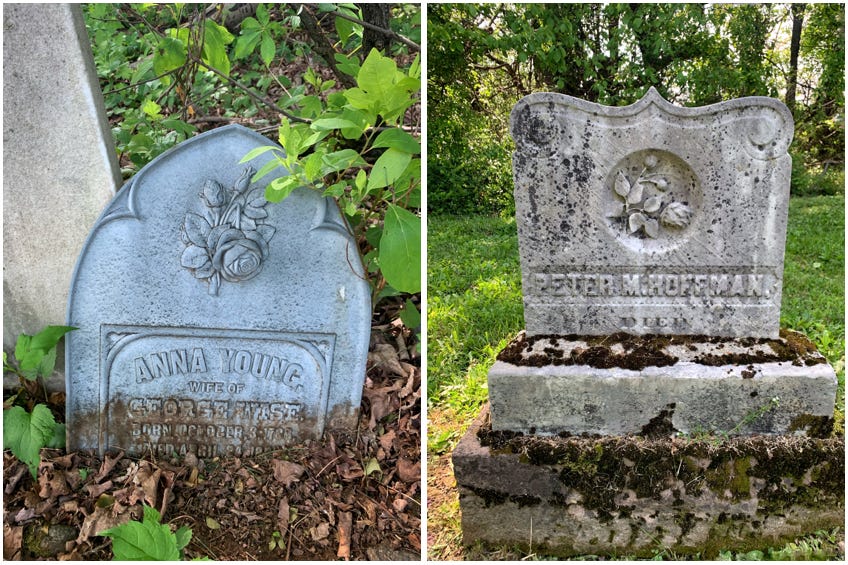Sunday Pastries With the Dead 26
The circa-1727 Fairmount First Presbyterian Churchyard in Califon, NJ.
The moment I pulled up to this tree-lined, historical headstone-peppered locale I knew it’d be one of my favorites—and one stroll of the sun-dappled, mock orange-scented grounds sealed the deal. This place has impeccable vibes—those interred are truly warm and gracious—and it’s the kind of spot you just want to kick back at with a book in hand. I plan to do just that very soon.
The original church and cemetery—situated just outside a small historical New Jersey town—were founded in 1727. The structure started as a log building, graduated to a stone chapel in 1816, and the current insanely quaint church was erected in 1851.
I loved this place so much that I re-walked the stone wall-lined perimeter three times after my initial exploration.
There are almost 400 burials here, including many gorgeous examples of early headstone fonts. The oldest death date I could find is that of Moritz Heinrich Kreter, who died in 1772. From that same century, there’s also Antony Waldorf (died 1777) and 10-year-old Elizabeth Creter (died 1793).
Some notable stones from the early 1800s include Gunrod Reed (what a name!!), who died in 1800, sweet one-year-old John A. Burd (died 1807), and George Miller (died 1808).
Among the slightly more recent headstones, there’s a lovely smattering of simple symbology—including plenty of weeping willows (standing for grief and mourning), which were a common design during the Victorian Era.
In an interesting spin on the usual tree symbol, these weeping willow images also feature columns—in the case of Elizabeth Trimmer Philhower (above left), the column is broken. This stands for a person whose life was cut short—Elizabeth was just 29 years old when she died in 1854. Husband and wife Peter and Mary Sutton’s beautifully-made matching stones include unbroken columns (indicating a noble life) as well as oak leaves (meaning longevity, strength, endurance, and faith)—they died at age 76 and 86, respectively.
Also among the memorials are many fine examples of hands with a finger pointing up (signifying where the soul went).
And there are some beautiful roses (standing for virtue, friendship, and joy). Fun fact: most roses carved on headstones have clusters of three leaves, to represent the holy trinity of the Father, Son, and Holy Spirit.
Let’s close with a speed round of the Unique Historical Name Game—here lies Emanches Blane, George Pickle, Morris Creator, and…
…not one but two Barbaries: Barbary Apgar and Barbary Crater. For all you inquiring minds: traditionally, Emanches is a male name and Barbary is female.
Until next Sunday, fellow taphophiles!













